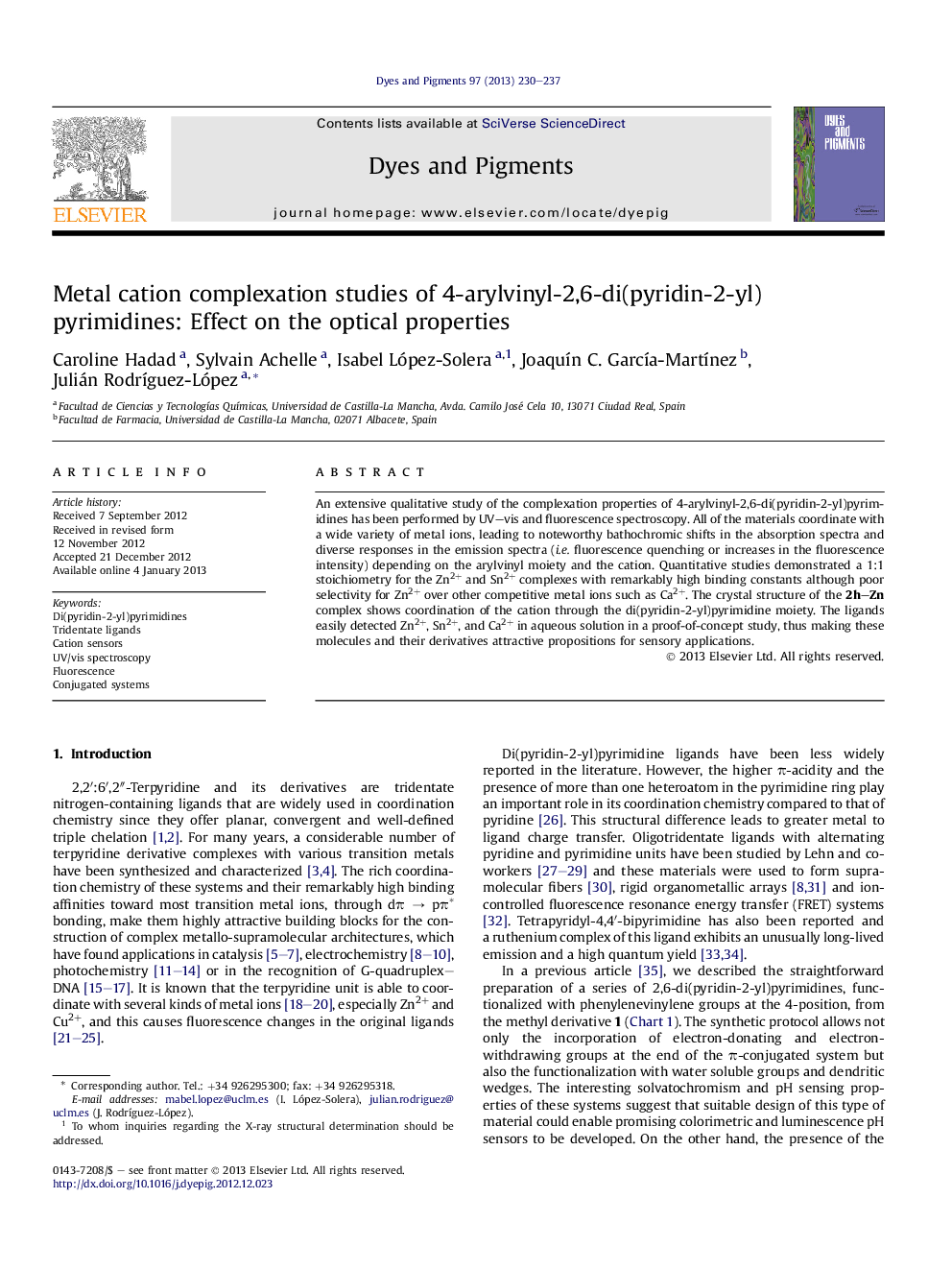| Article ID | Journal | Published Year | Pages | File Type |
|---|---|---|---|---|
| 176687 | Dyes and Pigments | 2013 | 8 Pages |
An extensive qualitative study of the complexation properties of 4-arylvinyl-2,6-di(pyridin-2-yl)pyrimidines has been performed by UV–vis and fluorescence spectroscopy. All of the materials coordinate with a wide variety of metal ions, leading to noteworthy bathochromic shifts in the absorption spectra and diverse responses in the emission spectra (i.e. fluorescence quenching or increases in the fluorescence intensity) depending on the arylvinyl moiety and the cation. Quantitative studies demonstrated a 1:1 stoichiometry for the Zn2+ and Sn2+ complexes with remarkably high binding constants although poor selectivity for Zn2+ over other competitive metal ions such as Ca2+. The crystal structure of the 2h–Zn complex shows coordination of the cation through the di(pyridin-2-yl)pyrimidine moiety. The ligands easily detected Zn2+, Sn2+, and Ca2+ in aqueous solution in a proof-of-concept study, thus making these molecules and their derivatives attractive propositions for sensory applications.
Graphical abstractFigure optionsDownload full-size imageDownload as PowerPoint slideHighlights► 4-Arylvinyl-2,6-di(pyridin-2-yl)pyrimidines coordinate with a large number of cations. ► Coordination leads to bathochromic shifts and diverse responses in the emission spectra. ► All the materials coordinate Zn2+ and Sn2+ with a 1:1 complexation stoichiometry. ► The Zn2+ complexes showed high binding constants although poor selectivity. ► The ligands detected Zn2+, Sn2+ and Ca2+ in aqueous solution in a proof-of-concept study.
